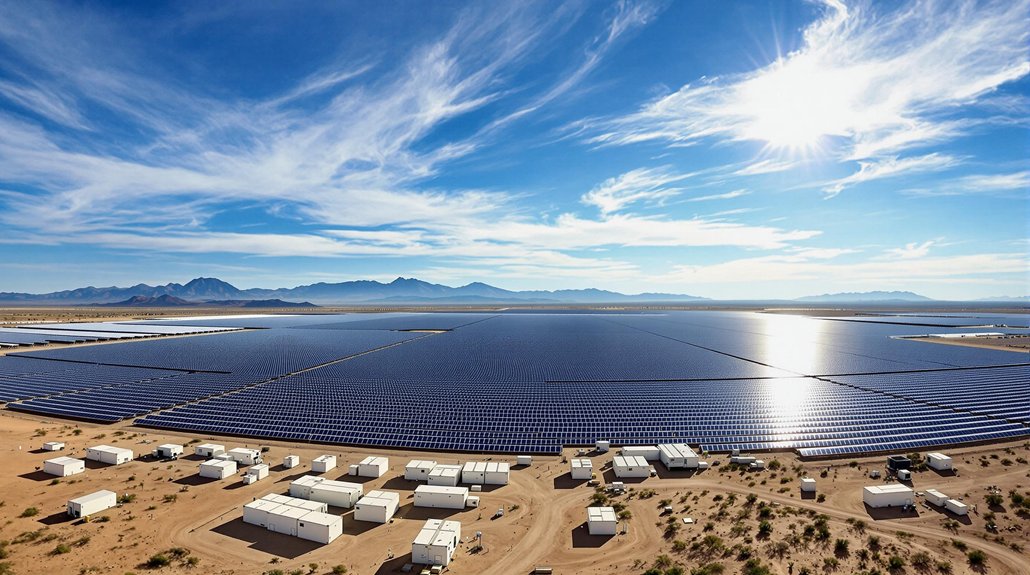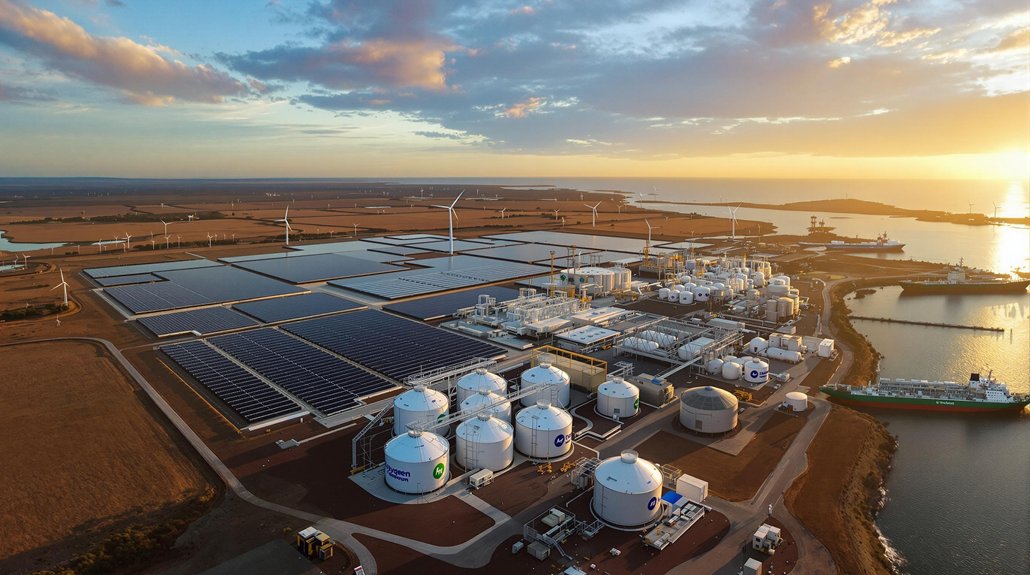Arizona’s energy landscape is changing dramatically with the $1.71 billion Maricopa Energy Centre project. The facility will house a 2,200 MWh battery storage system, the largest in the state. It’ll pair with 550 MW of solar capacity to strengthen grid reliability. This investment supports Arizona’s goal of increasing renewable energy sources from 8% to 67% by 2050. The project’s scale raises questions about how it might reshape the Southwest’s energy market.
As Arizona steps boldly into a new era of power generation, the state is initiating an ambitious energy transformation that promises to transform its grid. At the center of this change is the Maricopa Energy Centre, a landmark project combining 550 MW of solar capacity with an impressive 2,200 MWh of battery storage, making it the largest such system in the state.
Arizona’s bold energy transformation centers on the Maricopa Energy Centre, combining massive solar capacity with groundbreaking battery storage capabilities.
The project recently secured a substantial $1.71 billion debt facility, ensuring its development proceeds on schedule. Construction will unfold in two phases, with completion expected between 2026 and 2027. Arizona Public Service (APS), the state’s largest utility, has already signed power purchase agreements for the energy that will be produced.
APS isn’t stopping there. The company has secured its own $1.81 billion loan guarantee from the U.S. Department of Energy to support additional renewable energy initiatives. These investments aim to generate expected savings for 1.4 million customers through reduced electricity costs. These include the Agave Battery Energy Storage System and a 20-year agreement with the Papago Storage project, which will add another 1,200 MWh of standalone energy storage by mid-2025.
These investments align with Arizona’s ambitious grid transformation goals. The state plans to increase its renewable energy from 8% today to 67% by 2050, while boosting carbon-free power from 43% to 87%. This shift requires substantial capital, with projections indicating $84 billion will be needed for new generating technology over the next three decades.
Arizona’s generating capacity is expected to triple from 27.6 GW in 2021 to 84.6 GW by 2050. The increased capacity is necessary to balance the intermittent nature of renewable sources like wind and solar. Battery storage projects like those at Maricopa and Papago are critical for maintaining grid reliability during peak demand periods, especially as Phoenix experienced record high demand during severe heatwaves in 2024.
While the environmental benefits are significant, consumers will see gradual changes in their bills. Electricity rates are projected to increase by 47% by 2050, with annual household energy costs rising from $1,300 in 2021 to $2,300 by 2060. The development addresses one of the major storage issues faced by renewable energy sources due to their intermittent nature.
However, the federal and private financing structure helps reduce the immediate burden on taxpayers.








